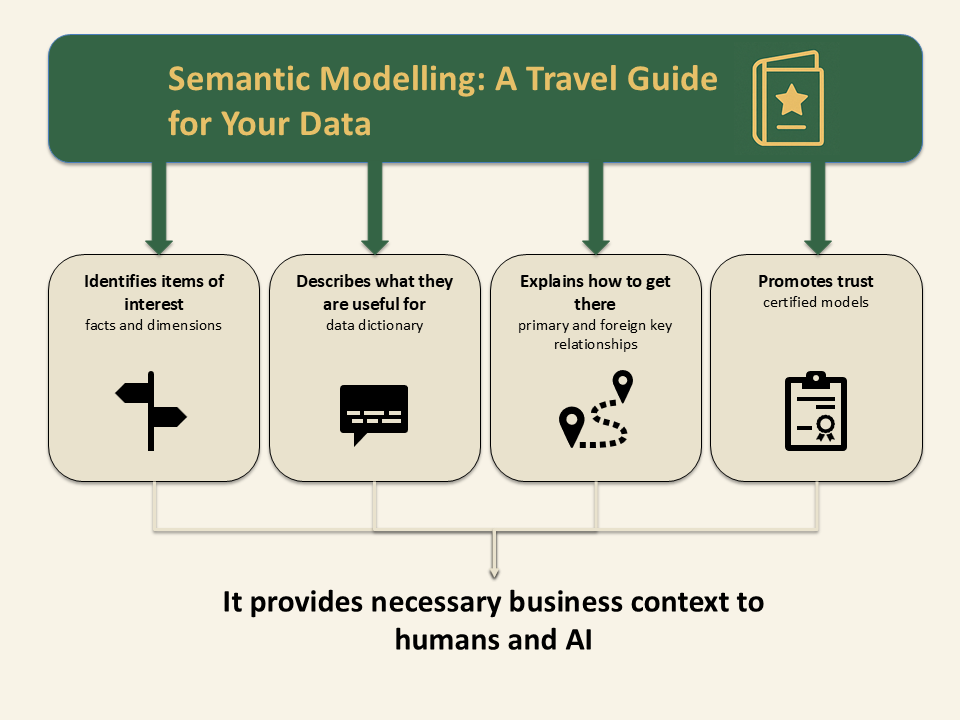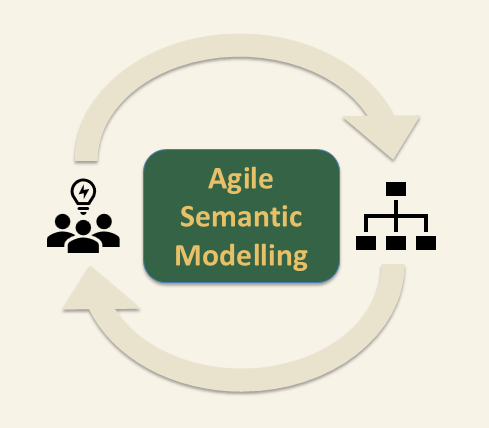Why Your AI Strategy Needs Robust Semantic Modelling
Have you ever had a stakeholder or executive ask: "Why can’t we just throw an LLM at our data and let it generate insights?" I have – and if you're working at the intersection of BI and AI, you probably have too.
It’s a tempting idea, Large Language Models (LLMs) are trained on large quantities of text scraped from the internet, so why not apply that same intelligence directly to our company data? The problem is that this misconception, mistaking the power of scale for the presence of structure, leads many non-technical stakeholders to undervalue one of the most crucial enablers of trustworthy, strategic AI: semantic modelling.
In this article, I want to help you unpack that misconception and give you a practical way to explain the importance of semantic modelling to your colleagues, clients, or leadership. If you've struggled to articulate why AI without business context leads to shallow or misleading insight, this will help you make the case.
What is Semantic Modelling?
I like to think of Semantic Modelling as a travel guide for your data. On your own in a new city you’re wandering around, trying to decipher the map and avoid the tourist traps. But with a guide suddenly the city is vibrant and authentic. A guide will highlight and clearly identify items of interest (facts and dimensions) and describe what they are and why they are significant (data dictionary). They’ll also explain how to get around (primary and foreign key relationships), ensure you know how to talk to the locals in their own language (metrics) and can even endorse local businesses (data and models) as trustworthy.
Why is Semantic Modelling critical for AI?
Enhanced Data Quality and Consistency – Semantic models standardise data definitions, ensuring everyone across the business – and all AI models – interpret metrics consistently. This reduces ambiguity and enhances the reliability of AI insights.
Improved AI Performance – AI models require context to deliver accurate predictions and recommendations. Semantic models provide structured context, enabling AI to navigate complex relationships within data and deliver insights aligned closely with business needs.
Greater Accessibility for Business Users – A well-designed semantic layer abstracts technical complexity, empowering non-technical users to interact with sophisticated AI-driven insights without needing deep data science expertise.
Facilitates Agile and Scalable Analytics – Semantic models offer flexibility. As businesses grow and data evolves, semantic models can adapt, providing AI systems with continuous, relevant, and context-rich data streams. This supports scalability in analytics initiatives, avoiding costly and rigid re-engineering efforts.
Why LLMs can’t do it all
LLMs are seriously impressive, so it’s easy to understand why ‘Adam from Finance’ or some other non-technical stakeholder might suggest they could single handedly make sense of all your business data. LLMs have read most of the internet, can write fluent answers, and even pull together general knowledge pretty well. But when it comes to business data, that’s not enough. Business data is different. It’s usually:
Very specific to your company and context
Messy or inconsistently defined
Spread out across different systems and teams
LLMs don’t actually understand your business. They spot patterns in language — they don’t know your definitions, your business rules, or what really matters to your team. They’ll take whatever you put in the prompt and run with it, without knowing what a “customer” or “churn” means in your world.
The danger? The answers sound smart — so it’s easy to think they are smart. But without a solid foundation underneath, the insights can be shallow, unreliable, or just plain wrong.
What This Looks Like in Practice
Let’s say you’re investigating customer churn. A good semantic model starts with a clear definition: what counts as churn, what’s voluntary vs. involuntary, which behaviours matter. When we provide AI with that kind of contextual clarity it will generate more useful insights – the kind that lead to real decisions and real impact.
How to Get There
You don’t land on a strong semantic model by accident. It takes real teamwork — business stakeholders, data experts, and AI specialists all collaborating from the start. That collaboration isn’t just good practice — it’s how you build trust and get genuine buy-in from your stakeholders. But beyond alignment, it also takes iteration. Semantic modelling isn’t a one-and-done design exercise; it’s an ongoing process of refinement. As business questions shift, definitions need adjusting, metrics need revisiting, and data relationships often need a second look.
An iterative, agile approach allows you to build meaningful structure gradually, validating as you go and adapting. This keeps your semantic layer aligned with the business as it grows and shifts. You define key concepts carefully, align on what success looks like, and put governance guardrails in place to preserve consistency – without locking yourself into rigid, inflexible structures.
The result is a living semantic model: grounded in structure, guided by governance, and flexible enough to support innovation.
In an AI-driven business landscape, investing in semantic modelling isn't just beneficial – it's indispensable for ensuring AI generates meaningful, reliable, and strategically actionable insights.


